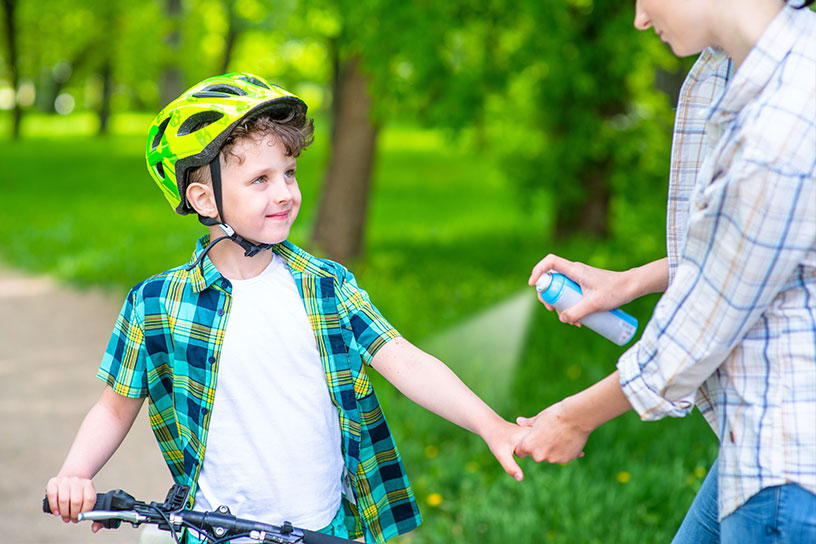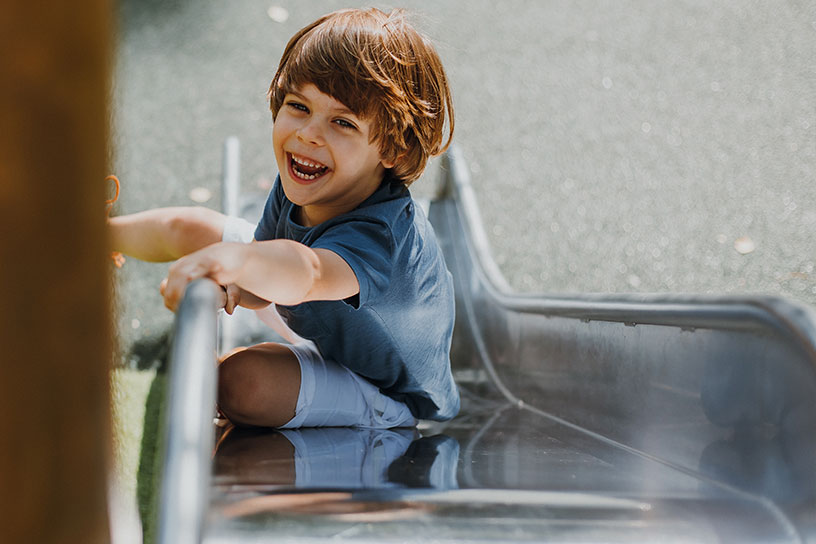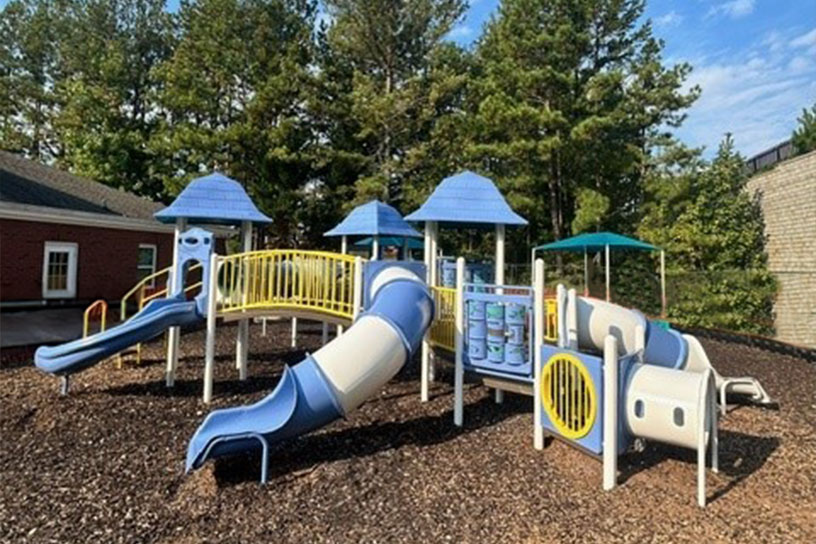Metal slides were once a common sight on playgrounds around the world. These slides were made of steel or aluminum, with a shiny finish that glistened in the sunlight. Children would climb the ladder, often feeling a sense of excitement and anticipation, before sitting down on the hot metal surface and sliding down at breakneck speeds. However, with the advent of new materials and safety regulations, metal slides have become less common in modern playgrounds. Despite their decline in popularity, metal slides continue to hold a special place in the memories of many who grew up playing on them. So, why did playgrounds once have metal slides?
In the past, metal slides were a common sight in playgrounds due to their durability, low maintenance requirements, and cost-effectiveness. Compared to earlier slides made of wood or concrete, metal slides were also considered safer as they had a smoother surface that reduced the risk of splinters and cuts. The metal construction was also less prone to rotting or warping over time. However, despite their benefits, metal slides have now become a thing of the past due to a number of factors ranging from safety to comfort. In this article, we’ll take a look at why playgrounds may still have a metal slide as well as the dangers and what you can do to properly inspect these on older playgrounds.
Why Do Playgrounds Have Metal Slides?
Metal slides, with their durability and fast, smooth ride, were a playground staple in the 1950s and a popular choice for many years after. Children loved the thrill of the slide, and the metal construction meant that they could enjoy it for a long time without the need for frequent replacements. However, as playground safety regulations evolved and concerns about heat and potential injuries increased, metal slides have become less common in playgrounds.
What are the Dangers of Metal Slides?
There are several dangers associated with metal slides that have contributed to their decline in popularity. Let’s take a look at the top 5:
- Burns
Metal slides have a significant risk of becoming extremely hot when exposed to direct sunlight for extended periods. The surface of the slide can reach temperatures high enough to cause burns to a child's delicate skin. In some cases, these burns can be severe enough to require medical attention. This danger is especially significant during the summer months when playgrounds are in high use, and temperatures can soar. Children may not always be aware of how hot the slide is before they slide down, leading to unexpected and potentially severe burns. This risk can be especially high for younger children who are more vulnerable to burns and may not have developed the reflexes needed to protect themselves from hot surfaces. - Slips & Falls
Another danger associated with metal slides is the increased risk of slips and falls, especially when they get wet. The smooth metal surface of the slide can become extremely slippery when it's wet, making it more challenging for children to maintain their balance while sliding down. Even if the surface isn't visibly wet, dew or condensation can accumulate on the metal surface, making it slippery without the child realizing it. Additionally, if children wear loose clothing, such as dresses or shorts, they may become entangled in the slide, leading to a fall. Falling from a height can cause serious injuries, such as broken bones, bruises, and head injuries, which can be fatal in severe cases. - Head Injuries
Head injuries are another potential danger of metal slides. While the smooth surface of the slide may reduce the risk of cuts and scrapes, it does little to cushion a child's fall. If a child loses their balance or goes down the slide too quickly, they may hit their head on the metal surface. The risk of head injury is especially concerning on tall metal slides, where children can pick up significant speed before reaching the bottom. While playgrounds typically have safety measures in place, such as safety barriers or rubberized surfaces beneath the slide, the risk of head injury is still present. - Loose Clothing
Another potential danger of metal slides is that loose clothing, like hoodies or scarves, can get caught on the edges of the slide. If a child's clothing gets caught, they can potentially choke or suffocate, which could be fatal. Additionally, if a child tries to free themselves from their caught clothing, they may lose their balance and fall off the slide, leading to other injuries - Entanglement
Entanglement is another danger associated with metal slides. Small gaps or spaces in the metal structure can potentially trap a child's fingers or other body parts, causing serious injury or even amputation. Children may also attempt to climb on the slide in ways that are not intended, increasing the risk of entanglement.How Can You Properly Inspect a Metal Slide?
CPSI (Certified Playground Safety Inspector) inspect a metal slide as part of their overall inspection of the entire playground. They examine the metal slide to ensure that it is structurally sound and free of any sharp edges, rust, or other damage that could cause injury to children.
The inspector checks for proper installation and secure anchoring to the ground. They also evaluate the condition of any coating or finish on the metal slide to ensure that it is not peeling, chipping, or fading, which could expose the metal underneath and create potential hazards. Additionally, they may test the metal slide's surface to determine whether it is too hot or slippery, which could make it unsafe for children to use.
If any problems are found during the inspection, the CPSI will provide recommendations and requirements for corrective action to ensure the safety of the playground.
Can You Make Your Playground Safer by Replacing a Metal Slide?
Replacing a metal slide can make a playground safer, and there are several options available. Plastic or composite slides are the most common replacements for metal slides. These materials are less likely to cause burns, are less slippery when wet, and are generally safer for children to use. Additionally, plastic slides are typically designed with safety in mind, with features like high sides and enclosed runways that can prevent falls or entrapment. Composite slides made of a mix of plastic and wood fibers offer an environmentally friendly option that is also slip-resistant and durable.
When considering a replacement slide, it's important to choose one that meets safety regulations and guidelines set by organizations such as the Consumer Product Safety Commission (CPSC). Installing impact-absorbing surfacing underneath the slide can also reduce the risk of injury from falls. By choosing a safer replacement slide and ensuring proper surfacing, you can make your playground a safer and more enjoyable place for children to play.
For more information on how to make your playground safer, contact us today!





